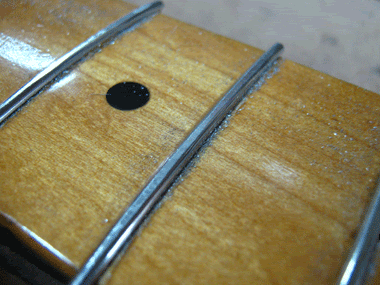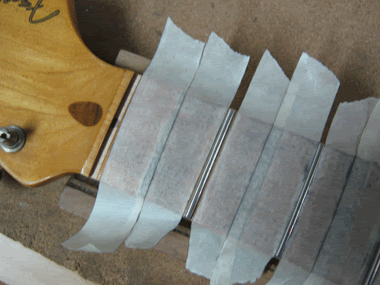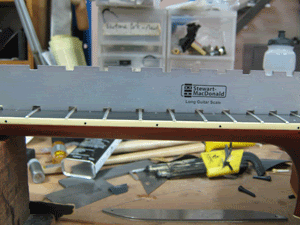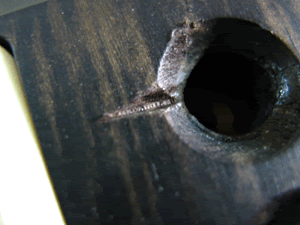
Before entering the operating theatre.
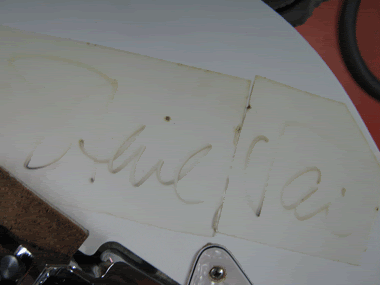
Steve Vai's signature which offers no particular significance nonetheless.

Worn out frets. Not particularly bad, but the owner wanted a change in fret size and some notes were choking on the upper frets

Frets are removed and the fingerboard is checked with a radius gauge. 16" radius it is.

Inevitably, some chipping occurred as the frets were removed.

Chip is reglued.
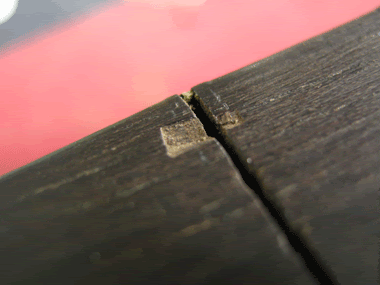
Another chip.
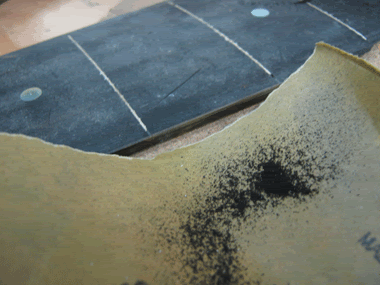
Ebony dust is also used to touch up the chipped areas.

Using a 16" radius block, the fingerboard is sanded down.

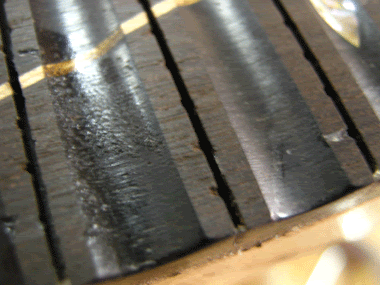
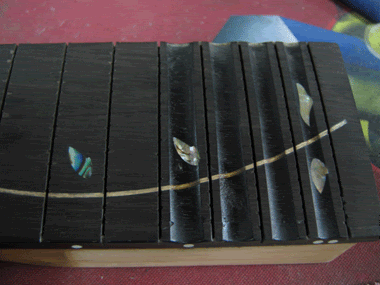
After leveling the fingerboard, the chipped areas look acceptable. After putting on the frets, the repair should be near invisible.


The frets are seated in with a hammer and ready to be pressed in.

Frets are pressed in with a radius caul on the drill press. I don't always use the radius caul to press in the frets and actually I prefer the hammer most of the time.
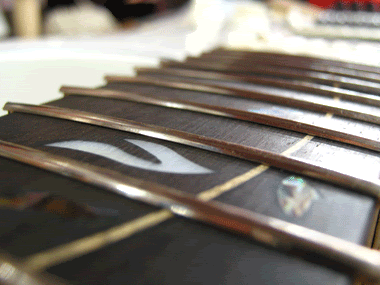
The frets are pressed in to perfection - absolutely no gaps showing :)

Frets are leveled and due to the meticulous fretboard prep, only a light level is needed.
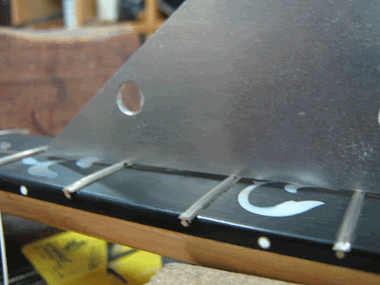
Routinely, the frets are checked with a straight edge. No problems here.



The frets are trimmed, crowned and polished. As you can see from the various angles, the fret ends are rounded off for playing comfort.

Guitar is strung up and ready to rock!
Hope you enjoyed that,
KC








